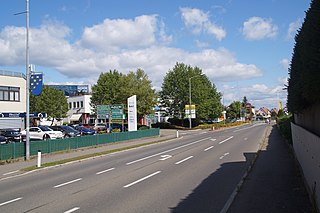
Spielberg is a city located in the Bezirk Murtal in Styria, Austria.

Lilienfeld is a city in Lower Austria (Niederösterreich), Austria, south of St. Pölten, noted as the site of Lilienfeld Abbey. It is also the site of a regional hospital Landesklinikum Voralpen Lilienfeld. The city is located in the valley of the Traisen River. Lilienfeld is in the province which the Ancient Romans called Noricum. Just a short distance past Lilienfeld Abbey, one can find the chair lift station that brings travelers to the top of Muckenkogel, a mountain in the Gutenstein Alps, at the height of 4,095 feet. On March 19, 1905, Muckenkogel was the site of the first official Alpine Ski Race, which was won by ski pioneer, Czech-born Mathias Zdarsky.

Sankt Lambrecht is a market town in the district of Murau in Styria, Austria. It is known for St. Lambrecht's Abbey, one of the most important Benedictine monasteries in Austria. The monastery complex and its gardens are part of the Zirbitzkogel-Grebenzen nature park.
Bezirk Lilienfeld is a district of the state of Lower Austria in Austria.
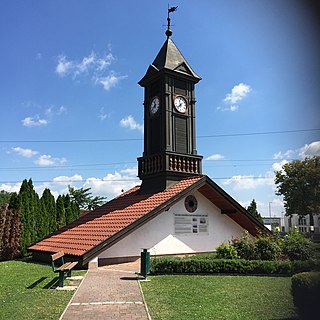
Neufeld an der Leitha is a town in the district of Eisenstadt-Umgebung in the Austrian state of Burgenland. It lies on the river Leitha, which forms the border with Lower Austria.
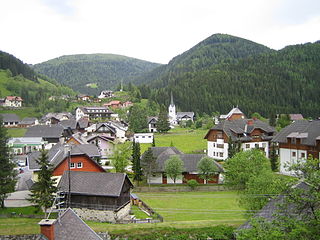
Reichenau is a municipality in the district of Feldkirchen in the Austrian state of Carinthia.

Althofen is a town in the district of Sankt Veit an der Glan in the Austrian state of Carinthia.

Mühldorf is a municipality in the district of Spittal an der Drau in the Austrian state of Carinthia.

Radenthein is a town in Spittal an der Drau District, in the Austrian state of Carinthia.
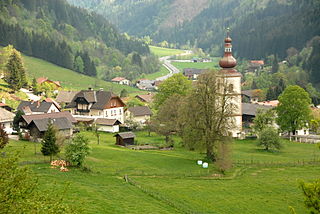
Afritz am See is a municipality in Villach-Land District in the Austrian state of Carinthia.

Feld am See is a municipality in the district of Villach-Land in the Austrian state of Carinthia.

Ferndorf is a municipality in the district of Villach-Land in the Austrian state of Carinthia.

Eberndorf is a market town of the Völkermarkt District in Carinthia, Austria.

Alland is a market town in the district of Baden in the Austrian state of Lower Austria.

Heiligenkreuz is a municipality in the district of Baden, in the Austrian state of Lower Austria. It is known for the Cistercian monastery of Heiligenkreuz Abbey, the associated papal college Benedict XVI, commonly known as Hochschule Heiligenkreuz, and the Catholic Leopoldinum seminary.

Pfaffstätten is a town in the district of Baden in Lower Austria in Austria.

Kleinzell is a town in the district of Lilienfeld in the Austrian state of Lower Austria.

Rohrbach an der Gölsen is a town in the district of Lilienfeld in the Austrian state of Lower Austria.
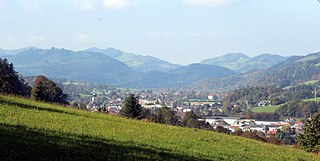
Sankt Veit an der Gölsen is a town in the district of Lilienfeld in the Austrian federal state of Lower Austria.
Oberwölz is a city since 2015 in the Murau District of Styria, Austria. The city was founded as part of the Styria municipal structural reform, at the end of 2014, with the merger of the former independent municipalities Oberwölz Stadt, Oberwölz Umgebung, Schönberg-Lachtal and Winklern bei Oberwölz, whereby the new municipality became ranked as a city ("Stadtgemeinde").





















